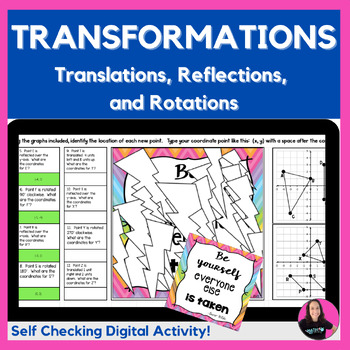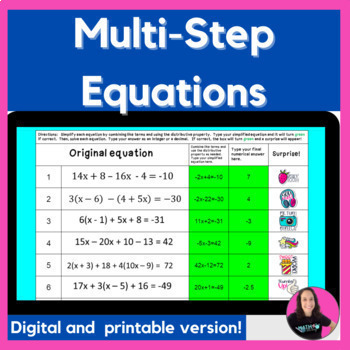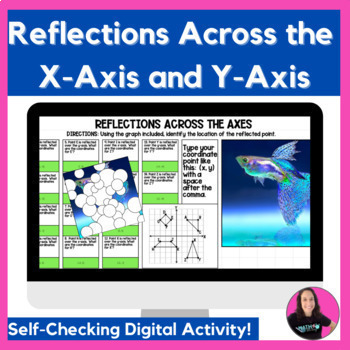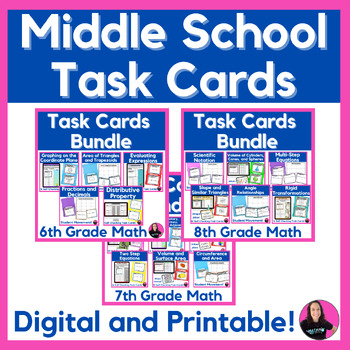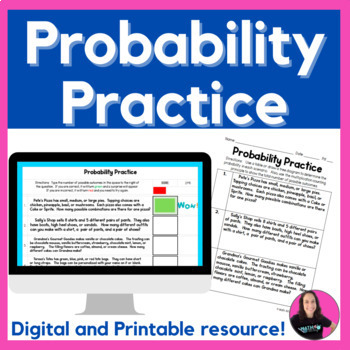When students first encounter the words scale factor or scale drawing, many are instantly overwhelmed. But these concepts are more than just standards to check off—they're real-world math skills with visual power and hands-on potential. From blueprints to maps to enlarging photos on a screen, understanding scale helps students see how math connects to the world around them.
This blog post breaks down the difference between scale copies, scale factors, and scale drawings and shares clear, classroom-tested ways to teach and reinforce these ideas.
What Is a Scale Copy?
A scale copy is a figure that has been resized (larger or smaller) but still keeps the same shape and proportions as the original figure. Think of it as an exact replica, just zoomed in or zoomed out.
 |
| Grab Your Scale Copies and Dilations Activities |
Key idea to teach students: All angles stay the same, and the side lengths change in proportion.
Tip: Show two rectangles side by side, one original and one enlarged. Ask: “What stayed the same? What changed?”
What Is a Scale Factor?
The scale factor is the multiplier used to create a scale copy. It tells you how much larger or smaller the new figure is compared to the original.
- A scale factor greater than 1 means the figure is enlarged.
- A scale factor less than 1 (but greater than 0) means the figure is reduced.
- A scale factor of 1 means the figures are the same size (a congruent copy).
 |
| Grab the Scale Copies & Scale Factors Drawing Activity! |
Example: If one side of a triangle is 4 units and its copy is 8 units, the scale factor is 2.
Tip for teaching: Give students a set of original shapes with measurements and ask them to create a new shape using a given scale factor (e.g., "Scale this triangle by a factor of 3"). Try some task cards!
What Is a Scale Drawing?
A scale drawing is a two-dimensional representation of a real object or place, but at a smaller or larger size than the actual item. Maps, architectural plans, and model car blueprints are all examples.
 |
| Grab the Scale Drawings Stoplight Activity! |
Common representations: A map scale like 1 inch = 5 miles A blueprint scale like 1 cm = 2 feet
Real-world connection: Show students a map or a room layout. Have them measure and calculate actual distances or dimensions using the given scale.
How to Teach These Concepts in Middle School
Once students know the definitions, the next step is helping them apply what they’ve learned. Teaching scale concepts works best when lessons are clear, visual, and hands-on. Below are practical strategies to help students understand and remember scale copies, scale factors, and scale drawings.
1. Start with Visuals
Students often grasp mathematical concepts more quickly when they can see them in action. Visuals help bridge the gap between abstract ideas and concrete understanding. When teaching scale, it's especially important to show how shapes grow or shrink while still maintaining the same proportions. Visual models allow students to compare the original figure to its scaled version and begin noticing patterns on their own.
Activities to try: Draw simple shapes and apply a scale factor of 2, ½, or 1.5, or use cut-outs and have students physically build scale copies.
Focus on what stays the same and what changes.
2. Use Multiple Representations
Some students connect with numbers, others need visuals, and many need to physically manipulate something to fully understand it. Teaching scale effectively means introducing it in more than one way. By combining numerical, algebraic, and visual approaches, you give students different entry points to understanding how scale works.
- Numerical: Use ratios and proportions to calculate scale factors.
- Algebraic: Write equations showing the relationship between original and copy.
- Visual: Graph shapes on a coordinate plane and apply scale factors.
Example task: “Here’s a shape on a coordinate grid. Multiply each coordinate by the scale factor to get the new shape.”
3. Connect to Real Life
Scale isn’t just a math standard; it’s something students encounter regularly, often without realizing it. From GPS maps and floor plans to resizing photos or playing video games, scale is everywhere. When you connect scale concepts to things students use or see in everyday life, the math becomes more meaningful and memorable.
Ask students:
- Have you used a map app today?
- Have you zoomed in on a phone screen?
- Have you seen blueprints or model homes?
Activity idea: Create a classroom map project where students measure parts of the room and draw them to scale. Or flip it, give them a tiny floor plan and ask them to calculate the actual size of the space.
4. Practice in Different Ways
One-and-done doesn't work for scale. Students need varied and repeated practice to truly internalize how scale factors work and what scale copies and drawings look like. Incorporating a range of activities, drawing, measuring, solving, and explaining, keeps the concept fresh and helps reach learners with different strengths.
To help students retain the concept of scale:
- Do hands-on activities: Use rulers, graph paper, or virtual drawing tools.
- Try word problems: Give real-life scenarios: “If this tiny model of a garden has a scale of 1 in = 3 ft, how big is the actual garden?”
- Use interactive notebooks: Let students build a mini reference guide with definitions, diagrams, and examples they can revisit.
- Mix up the modalities: Draw it. Measure it. Solve it. Explain it.
Retention tip: Use “scale stations” where students rotate between drawing, computing, matching scale factors, and analyzing errors.
5. Check for Understanding with Reflection
Teaching a concept is one thing, knowing whether students actually understood it is another. Reflection allows you to assess learning in a meaningful way while giving students a chance to verbalize their thinking. It also helps them make sense of what they've learned and how to apply it in new situations.
End each lesson or week with quick check-ins:
“What does a scale factor of less than 1 tell you?”
“How can you tell if two figures are scale copies?”
“Why might someone use a scale drawing?”
Encourage students to explain their thinking, not just show their math.
.png) |
| Grab the Scale Copies & Scale Drawings Bundle Here! |
Scale copies, scale factors, and scale drawings may seem like textbook terms at first, but they offer a gateway to real-world math understanding and spatial reasoning. With visual models, real-life connections, and varied practice, middle schoolers can not only grasp the concept, they can own it.
By breaking it down and giving students multiple ways to interact with scale, you’ll help them move from confusion to confidence. And who knows, maybe they’ll even start to enjoy ratio reasoning!






